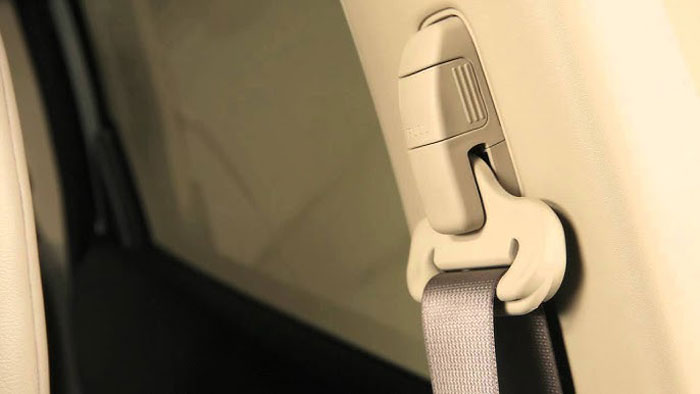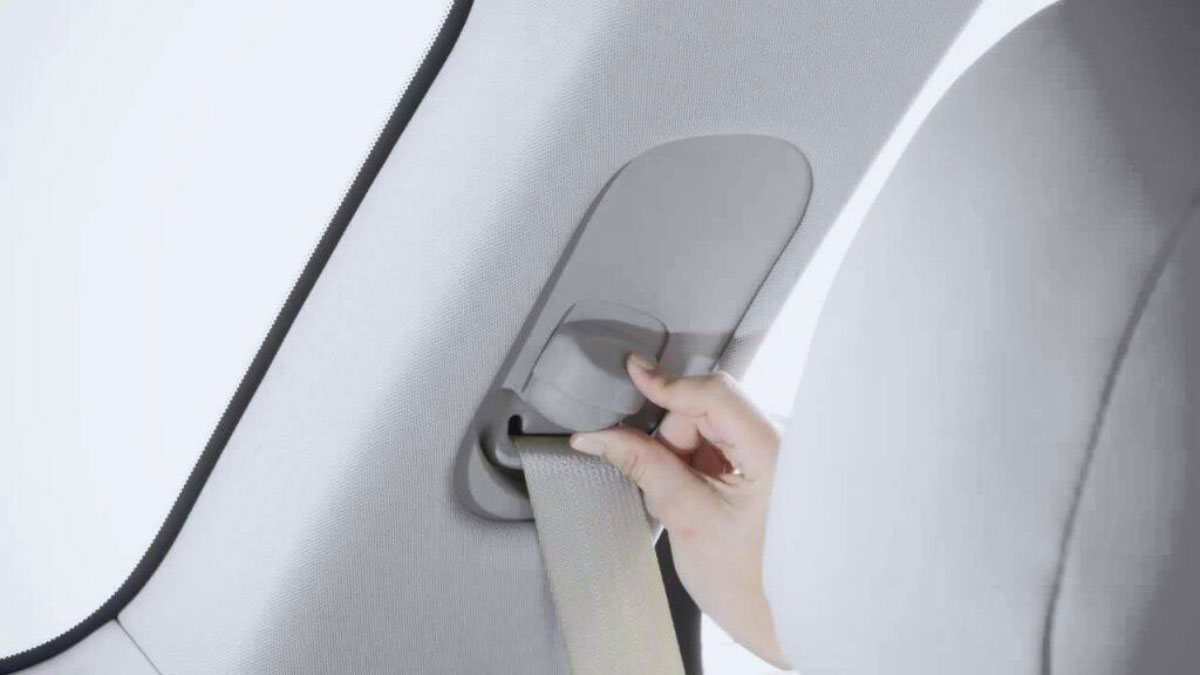Ever had one of those days where your seat belt decides it’s auditioning for a role in a horror movie? You’re all set to drive, but the seat belt just won’t retract, leaving you wrestling with it like it’s a stubborn toddler. Been there, done that, got the bruises to prove it.
Common Reasons for Seat Belt Not Retracting
Imagine sitting in your car, ready to hit the road, only to find your seat belt acting like a stubborn sloth, refusing to retract. Not only is it annoying, but it’s also a safety hazard. Let’s jump into the common reasons your seat belt might be playing this prank on you.

Stuck Seat Belt Reel
A stuck seat belt reel is a frequent culprit.
- Foreign Objects: Small stuff like coins, food crumbs, or even pens can get lodged in the reel mechanism, causing a jam. I once found a French fry that had made a cozy home there!
- Twisted Belt: The belt itself can get twisted or tangled within the reel. It’s like trying to untangle Christmas lights but slightly less festive.
- Wear and Tear: Over time, the reel mechanism can wear out due to friction. It’s the automotive equivalent of having too many birthdays.
Faulty Seat Belt Retractor
A malfunctioning retractor can really mess things up.
- Spring Problems: The spring inside the retractor can lose its tension. Think of it as an aging rock star who can’t hit the high notes anymore.
- Internal Damage: Components inside the retractor can break or wear out. If you’ve ever dropped your phone and shattered the screen, you know how it goes.
- Moisture Exposure: Water can seep into the retractor, causing rust and corrosion. It’s like leaving a sponge cake out in the rain, just sad and mushy.
Seat Belt Indicator Light Issues
Seat belt indicator lights have their quirks.
- Faulty Sensor: The sensor detecting if the seat belt is engaged might be failing. It’s like a smoke alarm that goes off while you’re cooking bacon.
- Electrical Problems: Wiring issues or loose connections can affect the seat belt system. Picture a Christmas tree with one light out, making the whole thing look wonky.
- Calibration Error: The system might need recalibration. Think of it as rebooting your laptop when all else fails.
By identifying these common issues, fixing that stubborn seat belt can go from a frustrating ordeal to a quick DIY victory.
Easy Steps to Fix Your Seat Belt
Ready to win the battle against your stubborn seat belt? Follow these easy steps to get it retracting like it just scarfed down a triple espresso.
Step 1: Verify the Seat Belt Retractor Problem
First, identify the retractor as the problem child.
- Check for Obstructions: Look for foreign objects caught in the way.
- Twisted Belt: Ensure the belt isn’t twisted or misaligned.
- Wear and Tear: Inspect the belt for any signs of fraying or damage.
If it’s a mess, congrats! You found your culprit.
Step 2: Retract the Seat Belt Fully
Next, extend the belt to its full, lazy stretch.
- Pull Gently: Avoid yanking, you’re not starting a lawnmower.
- Release Slowly: Let it retract by releasing it slowly and observing any hitches.
If it feels like you’re arm wrestling a sloth, you’re on the right track.
Step 3: Clean the Seat Belt and Retractor
Time to give it a spa day. Cleanliness is next to retract-iness.
- Mild Detergent: Use a gentle detergent and warm water combo.
- Soft Cloth: Scrub the belt with a baby-soft cloth.
- Compressed Air: Attack the retractor space with compressed air to clear out dust bunnies.
Watch as the cleanliness transforms your underachieving seat belt.
Step 4: Dealing with the Panel and Winder
Getting into the guts, we remove the panel around the winder.
- Screwdriver or Trim Tool: Use these tools to pry off the panel carefully.
- Winder Inspection: Peek at the winder mechanism for any obvious issues.
- Reassemble with Care: Once inspected, reassemble carefully to avoid extra pieces, like someone puzzled over IKEA instructions.
Your seat belt’s internal escapades should now be in check.
Voilà! Your seat belt should be retracting spiffily, like it’s got something to prove.
Additional Techniques for Persistent Issues
While the basic steps can solve most seat belt retraction problems, some issues may require extra tactics. Below, I’ll share two effective methods.
Sliding the Seat Belt Up and Down
In cases where the belt won’t retract smoothly, sliding it up and down helps identify if an obstruction or twist is hidden.
- Pull the belt out fully to inspect for twists.
- Grip the shoulder portion and move it up and down with a firm but gentle motion.
- Listen for any noises or feel for resistance. These indicate possible obstructions.
- If you find a twist, straighten it out by flipping the belt if constrained.
- Repeat until the belt slides smoothly up and down.
Using a Lubricant Spray
Sometimes, the belt mechanism needs a little help from a lubricant spray. Here’s how to apply it effectively:
- Choose the right spray: Use a silicone-based spray; avoid oil-based ones as they attract dust.
- Expose the mechanism: Pull the belt out fully.
- Spray lightly: Apply the lubricant sparingly on the winder mechanism, not the belt itself.
- Let it sit: Wait a few minutes to let the spray work into the mechanism.
- Test the belt: Retract and extend the belt a few times to distribute the lubricant and ensure smooth operation.
By using these techniques along with the basic steps, those persistent seat belt issues can become a thing of the past.
Professional vs. DIY Solutions
Sometimes a seat belt retraction issue deserves an expert touch, while other times, you can tackle it solo. Here’s how to decide when to call in the pros or roll up your sleeves.
When to Seek Professional Help
Seek professional help if:
- Complex Issues: If the retractor’s innards resemble a spaghetti disaster, it’s mechanics’ territory.
- Airbag Integration: Messing with integrated seat belts might invite an airbag blow. Let the pros handle the drama.
- Persistent Problems: If no DIY trick can fix it, perhaps, it’s time for diagnostic wizardry.
DIY Precautions and Tools
Prep yourself with these precautions and tools before diving in:
- Precautions:
- Disconnect Battery: Prevent electrical shocks by detaching the battery first.
- Safe Workspace: Choose a well-lit space free from distractions like curious pets.
- Follow Manuals: Keep the vehicle’s manual handy. Reading isn’t just for bedtime.
- Tools:
- Screwdrivers: For those pesky panels hiding secrets.
- Silicone-based Lubricant: Keeps the belt gliding like a penguin on ice.
- Torx Wrench: Essential for dealing with stubborn seat belt bolts.
So, whether you’re channeling your inner mechanic or dialing up the experts, these tips ensure your seat belt’s back to its retracting glory sans fuss.
Conclusion
So there you have it folks! With a bit of elbow grease and my foolproof steps, your seat belt should be retracting like a champ in no time. If it’s still acting like a stubborn mule, well, maybe it’s time to call in the pros before you end up tangled in a seat belt wrestling match.
Remember safety first! Nobody wants to be that person stranded in the driveway with a screwdriver in one hand and a confused look on their face. Happy fixing and may your seat belts always retract smoothly!
Frequently Asked Questions
What are common issues causing a seat belt to malfunction?
Common issues include obstructions, twists, wear and tear, faulty retractors, and indicator lights problems.
How do I fix a seat belt that won’t retract?
First, identify the problem, then fully retract the belt. Clean it, inspect the winder mechanism, and use a silicone-based lubricant spray if needed.
How can I clean a dirty seat belt?
Soak the seat belt in water for 10-15 minutes, squeeze out as much dirt as possible, and let it dry completely.
When should I seek professional help for seat belt issues?
Seek professional help for complex or persistent problems that cannot be resolved with basic steps, including issues with the retractor and mechanism.
What precautions should I take when attempting DIY seat belt repairs?
Disconnect the battery, and use the appropriate tools like screwdrivers and Torx wrenches. Prioritize safety during the process.
How do you reset a seat belt tensioner?
Usually, seat belt tensioners reset automatically. For manual reset, unbuckle and rebuckle the seat belt while the vehicle is safely stopped.
How do I test a seat belt locking mechanism?
Buckle the seat belt and pull up on the lap portion. If the latch plate is locked, the lap belt webbing will not lengthen.
How do I reset the seat belt sensor?
Unbuckle and buckle the seat belt back in three times quickly within 10 seconds while keeping an eye on the seat belt light on the dashboard.
What signs indicate a bad belt tensioner?
Listen for noise, improper serpentine belt tracking, tension loss, sticking, metal-to-metal contact, and any visible cracks or breaks on the tensioner.

